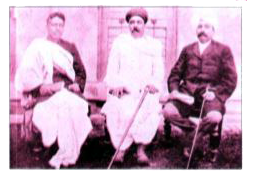When did the Census Act came into existence?
Step-by-Step Solution:
1. Identify the Question: The question asks for the year when the Census Act came into existence.
2. Recall Relevant Information: The Census Act is a legislative framework that governs the conduct of census operations in a country.
3. Determine the Year of Enactment: The Census Act in India was enacted in the year 1948.
4. Reference the Act Number: The specific act number for the Census Act is 37 of 1948.
5. Contextualize the Act: This act was established after India gained independence in 1947, and it laid the foundation for conducting census operations in the country.
6. Mention the First Census: The first census conducted under this act took place in 1951, which was the seventh census in India overall.
7. Summarize the Answer: Therefore, the Census Act came into existence in the year 1948.
Final Answer: The Census Act came into existence in the year 1948.
---
Topper's Solved these Questions
- ORGANISMS AND POPULATIONSBOOK - ICSECHAPTER - ORGANISMS AND POPULATIONSEXERCISE - PRACTICE QUESTIONS ( SHORT ANSWER TYPE -I QUESTIONS)
16 Videos
- ORGANISMS AND POPULATIONSBOOK - ICSECHAPTER - ORGANISMS AND POPULATIONSEXERCISE - PRACTICE QUESTIONS ( SHORT ANSWER TYPE -II QUESTIONS)
18 Videos
- ORGANISMS AND POPULATIONSBOOK - ICSECHAPTER - ORGANISMS AND POPULATIONSEXERCISE - COMPETITION CORNER (ASSERTION AND REASON TYPE QUESTIONS)
22 Videos
- MOLECULAR BASIS OF INHERITANCEBOOK - ICSECHAPTER - MOLECULAR BASIS OF INHERITANCEEXERCISE - MCQ (Source Based Questions)
23 Videos
- PRINCIPLES OF INHERITANCE AND VARIATIONBOOK - ICSECHAPTER - PRINCIPLES OF INHERITANCE AND VARIATIONEXERCISE - MULTIPLE CHOICE QUESTION
98 Videos
Similar Questions
Knowledge Check
Read the paragraph and answer the following questions:
On the report of a Sedition Committee, headed by Justice Rowlatt, two bills were introduced in the Central Legislature in February 1919. These 'Black Bills' came to be known as the Rowlatt Act. The object was to give government extraordinary powers of search and arrest so as to suppress the national movement. The Rowlatt Act gave enormous powers to the police (i) to search a place, and (ii) arrest any person they disapproved of without warrant. Two other ugly features of the Rowlatt Act were that (a) the trial was to be held in camera, i.e., the public and the newspapermen were not allowed to attend the trial, and (b) there could be no appeal against court's judgment. A well-known description of the Rowlatt Act at that time was: No Dalil, No Vakil, No Appeal, i.e., no pleas, no lawyer, no appeal. Despite much opposition the Rowlatt Act came into operation on 21 March 1919. The purpose of the Act was to curb the growing nationalist upsurge in the country. Gandhi described the Rowlatt Act as "destructive of the elementary rights of an individual". He called upon the people to do Satyagraha against such an oppressive measure, i.e., to disobey the law without resorting to violence. The Satyagraha against the Rowlatt Act began on 6 April, 1919. Gandhi asked the people to fast, pray and hold public meetings against the Black Act.
When did the Rowlatt Act come into force?AFebruary 1919B 21 March 1919C6 April 1919D 11 April 1919
When did the Medical Termination of Pregnancy Act in India come into existence?
View SolutionWhen did the structure labelled B in the following diagram start to form

View SolutionWhen did the first mass exinctions occur
View Solutiongof exists, when :
View SolutionThe conflict between the two sections of the Congress came to surface in its Session in 1906 at Calcutta. In this context explain the following:
With reference to the picture given below, answer the following:

Which section of the Congress did they represent?
View SolutionWhen did the water (Prevention and control of pollution) Act came into operation India ?
View SolutionThe Air Prevention and Control of Pollution Act came into force in
View Solution
